Profitability of two shepherding systems for production of ovine meat
Keywords:
extensive sheep grazing, profitability, rotational grazing, sheep production, weight gain.Abstract
In Güican (Boyacá), sheep production occupies one of the main items on the economy of the region, despite of being one of the largest, most relevant and important business, studies have not been developed to establish that is an efficient and sustainable business. For this reason a research was carried out in the Finca Ronces Güican, where two systems of grazing were temporarily implemented, an extensive traditional and rotational grazing. Forage present in the grazing area were: Molasses grass (Melinis minutiflora), Kidney weed (Dichondra repens) and Dutch clover (Trifolium repens L); 24 creoles sheep were used per system, selected according to age and sex, achieving uniformity in both groups used. The study was developed for 4 months in order to assess weight gain and profitability, by assessing and weighing the animals every 15 days. These data were recorded and once the trial period finished, comparisons were made to determine the effectiveness of each system. It was found that there is a significant difference between the two systems in terms of weight gain. In this way, in the conventional extensive system, sheep had a mean weight gain of 35.47 g / day, while in the rotational system the average profit was 124.24 g / day, so it was concluded that the rotational system is more profitable, since it has a return on capital of 8% over the traditional extensive system.Author Biographies
Daniel Fernando González Mendoza, Fundación Universitaria Juan de Castellanos
Esp. Producción Animal
Docente Fundación Universitaria Juan de Castellanos
José Luis Valbuena Puentes
Ingeniero Agropecuario
Erika Eliana Toloza Gordillo
Matemática
Asesora Estadística
References
Barrios, C. (2007). GUÍA PRÁCTICA DE OVINOCULTURA Enfocada hacia la producción de carne. Bogotá: BACOM Ltda.
Cárdenas, J. (2010). Supplemental feed during postweaning growth of Pellybuey x Blackbelly ewe lambs under grazing in the humid tropic. Archivos zootecnia, v. 59, n. 226.
Cheverría, A. &. (2011). Evaluación del efecto del trébol rojo (Ttrifolium Platense) en parásitos gastrointestinales (hameoncus contortus) en la finca francisco de asís municipio Soracá Boyacá. Tunja: Fundación Universitaria Juan de Castellanos Programa de Medicina Veterinaria.
Figueroa, G. (8 de diciembre de 2012). Industria ovina despega en Colombia. Agencia de Noticias Universidad Nacional, pág. 162.
González, A. M. (2007). Efecto del pastoreo mixto y monoespecífico en una pradera de alfalfa-ovillo. . Agrociencia, 41(4), 395-403.
González, D. (2011). Pequeños Rumiantes. Un negocio con posibilidad de rentabilidad. Revista Conexión Agropecuaria JDC, 67 - 74.
Reinoso, V., & Soto, C. (2006). Cálculo y manejo en pastoreo controlado. ii) pastoreo rotativo y en franjas. Revista Veterinaria Montevideo, 15 - 24.
Revidatti, M., & Capellari, A. (2005). Peso ajustado a los 120 días de corderos doble propósito y triple cruza. Buenos Aires.
Sánchez, V. &. (2004). Comportamiento etológico de ovinos en un sistema agrosilvopastoril aplicado a un cultivo de peras. . Pastos y Forrajes, 27(3), 259.
Zaragoza, J. (2001). Optimización del pastoreo con ovinos. Borrego, 50-64.
Cárdenas, J. (2010). Supplemental feed during postweaning growth of Pellybuey x Blackbelly ewe lambs under grazing in the humid tropic. Archivos zootecnia, v. 59, n. 226.
Cheverría, A. &. (2011). Evaluación del efecto del trébol rojo (Ttrifolium Platense) en parásitos gastrointestinales (hameoncus contortus) en la finca francisco de asís municipio Soracá Boyacá. Tunja: Fundación Universitaria Juan de Castellanos Programa de Medicina Veterinaria.
Figueroa, G. (8 de diciembre de 2012). Industria ovina despega en Colombia. Agencia de Noticias Universidad Nacional, pág. 162.
González, A. M. (2007). Efecto del pastoreo mixto y monoespecífico en una pradera de alfalfa-ovillo. . Agrociencia, 41(4), 395-403.
González, D. (2011). Pequeños Rumiantes. Un negocio con posibilidad de rentabilidad. Revista Conexión Agropecuaria JDC, 67 - 74.
Reinoso, V., & Soto, C. (2006). Cálculo y manejo en pastoreo controlado. ii) pastoreo rotativo y en franjas. Revista Veterinaria Montevideo, 15 - 24.
Revidatti, M., & Capellari, A. (2005). Peso ajustado a los 120 días de corderos doble propósito y triple cruza. Buenos Aires.
Sánchez, V. &. (2004). Comportamiento etológico de ovinos en un sistema agrosilvopastoril aplicado a un cultivo de peras. . Pastos y Forrajes, 27(3), 259.
Zaragoza, J. (2001). Optimización del pastoreo con ovinos. Borrego, 50-64.
How to Cite
González Mendoza, D. F., Valbuena Puentes, J. L., & Toloza Gordillo, E. E. (2014). Profitability of two shepherding systems for production of ovine meat. Cultura científica, (12), 84–91. Retrieved from https://revista.jdc.edu.co/index.php/Cult_cient/article/view/156
Downloads
Download data is not yet available.
Downloads
Published
2014-10-27
Issue
Section
Article of scientific and technological research




